
Do you have a question about the Samsung HPR5052X/XAC and is the answer not in the manual?
| Display Technology | Plasma |
|---|---|
| Aspect Ratio | 16:9 |
| HDMI Ports | 2 |
| Component Video Inputs | 2 |
| S-Video Inputs | 1 |
| Screen Size | 50 inches |
| Brightness | 1500 cd/m² |
| Input Ports | HDMI, Component, S-Video, Composite |
Instructions to avoid hazards during installation, service, and ESD.
Guidelines for safe and correct servicing procedures and component handling.
Steps to prevent damage to sensitive components from static discharge.
Safety guidelines for product installation and placement to prevent hazards.
Details on the TV's specifications, including block features and chip descriptions.
Comprehensive list of the TV's technical specifications and hardware configuration.
Comparative analysis of different Samsung TV models' specifications.
List of supplied and optional accessories included with the TV.
Guidelines and procedures for servicing and adjusting the TV after component replacement.
Steps to enter the service mode using the remote control and button operations.
Details on calibration, option bytes, and white balance initial values for factory settings.
Procedures for white balance adjustment, measurement conditions, and methods.
Instructions for downloading boot code and application code for software updates.
Procedures for adjusting SMPS panel voltages after component replacement.
Exploded view diagram and part list for the HPR5052X/XAA model.
List of electrical parts and their codes for the HPR5052X/XAA model.
Initial checks and procedures to perform when troubleshooting a TV.
Troubleshooting steps for specific error modes like "No Power".
Troubleshooting guide for specific assemblies (ASS'Y) and their common symptoms.
Overall block diagram illustrating the main components and signal flow of the TV.
Partial block diagrams for SMPS, DC-DC SMPS, and driver boards.
Diagram showing the overall internal wiring connections between major components.
Wiring connections between the PDP Module and the SMPS.
Wiring diagram illustrating connections between Main Board and other components.
Overall PCB layout diagram with numbered component references.
Schematic diagram for the power supply and tuner sections of the TV.
Schematic diagram illustrating the sound processing circuits and audio delay.
Schematic diagram for the MICOM, I/O expansion, and AV input/output connections.
Schematic diagram detailing the HDMI and PC input connections and related circuitry.
Schematic diagram for the SVP-EX52 processing chip and its associated components.
Schematic diagram for the S3C2800 CPU and related circuitry, including memory interfaces.
Schematic diagram for the EAGLE+ MPEG decoder and display clock generator.
Schematic diagram for the POD (Point of Delivery) module and its power input.
Schematic diagram for the DNIe Lite image enhancement and LVDS interface circuits.
Schematic diagram for the function assembly board, including buttons and controls.
Schematic diagram for the power supply and IR receiver assembly board.
Overview of the TV's front panel features and button functions.
Description of the rear panel connectors for input and output signals.
Detailed explanation of each button and function on the TV remote control.
Explanation of new features like Energy Saving Mode and its operation.
Table showing Picture-in-Picture (PIP) compatibility across different input sources.
Important notes and precautions regarding wall bracket installation.
Step-by-step instructions for assembling the wall mount bracket.
Instructions on how to securely attach the TV panel to the wall bracket.
Guide on how to adjust the mounting angle of the TV panel.
Instructions for assembling and attaching the TV stand base.
General notices and procedures for safe disassembly and reassembly of the TV.
Steps for removing the TV stand.
Procedure for separating the stand cable assembly.
Steps for removing the rear top cover assembly.
Procedure for removing the rear cover assembly.
Steps for removing the fan assembly.
Procedure for removing the main PCB assembly.
Steps for removing the rear sub cover assembly.
Procedure for removing the speaker assembly.
Steps for removing the SMPS, SMPS POD, and SMPS DC-DC boards.
Procedure for separating the logic board and its flat cable.
Steps for removing the X Drive Board.
Procedure for separating the Y Drive Board and its related Scan Boards.
Steps for removing the buffer boards (TOP and BOT).
Timing sequence diagram for the power ON/OFF signals and their flow.
Detailed block descriptions of the main board components and connectors.
Diagrams and pinouts for various connectors on the main board.
Description of the power button board components like remote sensor and power button.
Description of the function key board and its ambient light sensor.
Diagram and pinouts for the Main SMPS and its various output voltages.
Block diagram and pinouts for the POD SMPS.
Diagrams and pinouts for the DC-DC SMPS and its voltage outputs.
Identification of the main boards within the PDP module assembly.
Block diagram of the logic board, showing key functional blocks and interfaces.
Explanation of the logic board's functions and the role of buffer boards.
Key points for checking operation and reference waveforms for troubleshooting.
Definition of the drive circuit and its function in pixel control.
Explanation of how the drive circuit generates waveforms to control PDP pixels.
Block diagrams illustrating the operation of the Y and X drive boards.
Description of the function of each board in the drive circuit.
Specifications and descriptions of drive waveforms for Y and X components.
Explanation of FET operation and high-voltage switching principles.
Connector layout diagram for the X-Main board.
Connector layout diagram for the Y-Main board.
Troubleshooting steps for the Y Buffer and checking its operation.
Confirmation of Y Main and Y Buffer output using TP points.
Specifications for voltage adjustments for Vset, Vs, Vsc_l, Vsc_h, Ve, and Va.
Checking the output waveform of the X-Out on the X board.
Reference waveforms for Y output and Sustain.
Reference waveforms for X output and Sustain.
Explanation of power saving modes, ambient light sensor, and control mechanisms.
Information on common issues and their resolutions related to various product features.
Definitions of technical terms used in the manual.

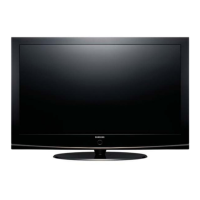
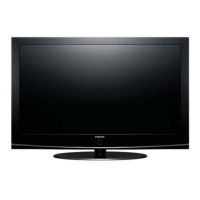
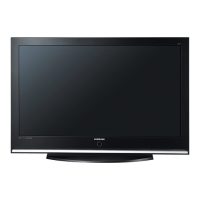
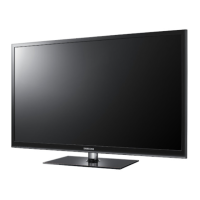

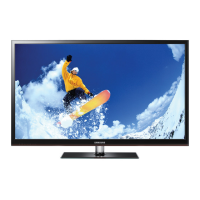

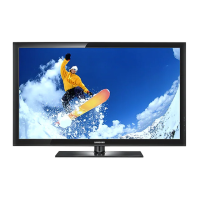
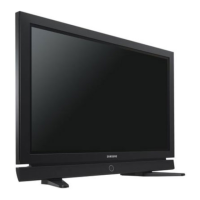

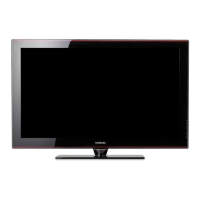
